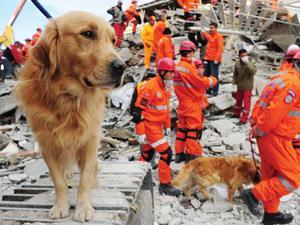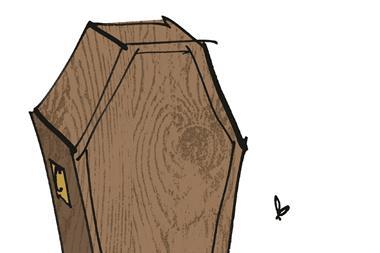Analysing volatiles could help train sniffer dogs to locate decaying corpses

Not many of us like to consider the complex chemical processes that begin after we die. But new research into the chemical odours released by decomposing bodies is providing forensic scientists with a powerful tool to determine how long a person has been dead, a term known as post-mortem interval (PMI). Understanding this ‘smell of death’ also helps scientists understand how sniffer dogs discover buried disaster victims and locate clandestine graves.
An international research team used two-dimensional gas chromatography time-of-flight mass spectrometry to characterise the odours that create this smell of death: volatile organic compounds (VOCs). By measuring the VOCs released from pig carcasses the team identified a cocktail of several different families of molecules, including carboxylic acids, aromatics, sulfurs, alcohols, nitro compounds, as well as aldehydes and ketones. The combination and quantities of these VOCs change as a function of time as a cadaver goes through different stages of decomposition.
Author Jean-François Focant from the University of Liege, Belgium, tells Chemistry World: ‘The use of state-of-the-art multi-dimensional techniques has allowed us to drastically improve our understanding of the VOC mixtures released during cadaveric decomposition. An odour fingerprint can be created for each stage of decomposition and possibly be used as an additional tool to estimate the PMI.’
Current PMI estimation is limited to assessing things like body cooling, how advanced decomposition is and the size of insects that have colonised the body. However, these do not always give an accurate answer. ‘Charting the changes to VOCs won’t provide a 100% reliable way of estimating PMI but it might improve the situation enormously,’ explains Anna Williams, a forensic anthropologist at the University of Huddersfield, UK.
The research could also help with the training of ‘human remains detection canines’. ‘We know very little about what compounds or combinations of compounds are recognised by sniffer dogs,’ says Williams. ‘Understanding this helps to improve their work in the field and with training aids. However, research on pigs as analogues for humans is compromised from the start. A human taphonomy facility (where the decomposition of human remains are studied) would boost forensic research.’
The development of a VOC profile for decomposing bodies should help scientists working to create an electronic nose, which are hardier than dogs and do not need costly training and upkeep. Sniffer dogs are more adaptable than their e-nose counterparts, however, and by entering dangerous places alone they help to keep their handlers safe. ‘Several groups are working on e-noses at the moment,’ Focant says, ‘but we are not sure if this technology will ever make sniffer dogs obsolete.’
References
P-H Stefanuto et al, ChemPlusChem, 2014, DOI: 10.1002/cplu.201402003












No comments yet